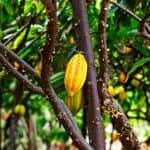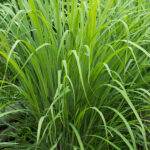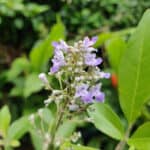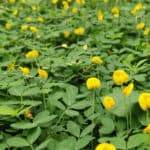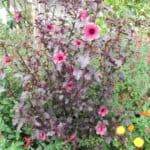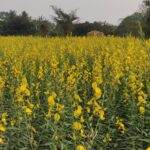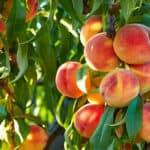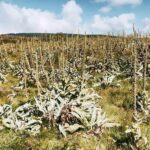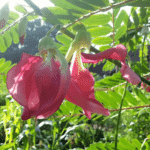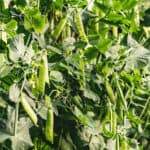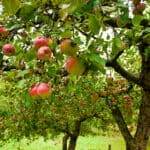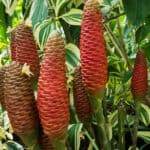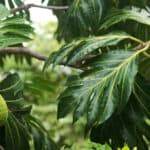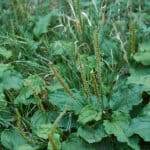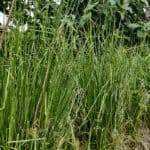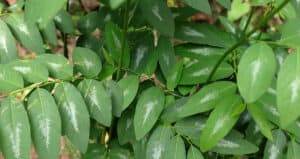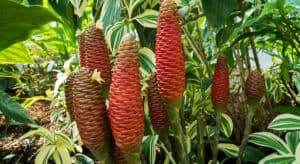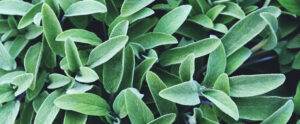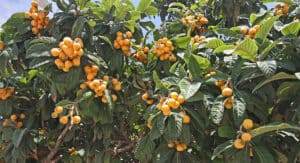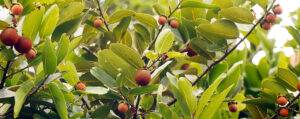Plants want to live. I find comfort in this idea a lot. When I’m certain I’ve killed something in the garden, it’s a reminder that these organisms are programmed for survival. And then comes along a plant like Comfrey, who wants not just to live, but to proliferate. Written into the nature of this plant is an ability to build and build upon itself, to regenerate. This quality makes Comfrey a very useful plant in lots of contexts: the home garden, the medicine cabinet, and permaculture plantings, to name a few. On our homestead, we think of Comfrey as a feeder, a fixer, and a healer.
Comfrey: Deep-Rooted and Fast-Growing

Comfrey, Symphytum officinale, is a perennial flower that grows densely, about 3 feet tall and nearly as wide. Its 8” long lance-shaped deep-green leaves look almost scaley and reptilian, but are also rough and hairy. The plant begins as a basal rosette, and then grows quickly and upright, fountaining out. Upper leaves are quite a bit smaller than the lower ones. Tiny bell-shaped flowers, ranging from white to pink to purple, grow in hanging clusters and begin blooming in mid-Spring. Flowering continues all the way through Autumn. Uniquely, the Comfrey plant continues to put on leaf and stem growth after it begins flowering.
Comfrey’s root system is extensive, and is what really makes this plant a powerhouse. Thick branching tap roots are black on the outside, white and slimy on the inside, and reach deep into the soil.
Without being cut back, the oldest stems will flop to the ground. The plant will die down with freezing temperatures, and will begin showing new growth in early-Spring.
Medicine for the Ancients

Comfrey’s co-evolution with humans dates back thousands of years. Native to Europe and West Asia, the plant was used medicinally by the Ancient Greeks and Romans. Its healing properties have given it long-standing popularity (and broader naturalization). Immigrants brought Comfrey to North America in the 1600s. It continues to be used horticulturally and medicinally, though less so in modern times. 20th Century scientific studies have put into doubt the safety of Comfrey’s chemical make-up.
Propagation & Planting

Site Selection (Zones 4-8)
Comfrey is VERY forgiving, and can make the best of its situation. If you have average soils that are well-drained, it will do just fine. If you have organically rich soils, slightly-moist, but not mucky, it will thrive. Give Comfrey full sun to partial shade. Regular watering (an inch per week) is ideal, but once the plant’s extensive roots get established, it proves itself to be pretty drought tolerant.
Maybe more important than deciding where you want Comfrey is deciding where you don’t want Comfrey. Be prepared for a lifelong friendship with your plants, which is basically a nice way of saying: Once you plant Comfrey, you’re stuck with it! Those extensive root systems are also rhizomatous, meaning the tiniest piece left in the ground can sprout a new plant. It is a very difficult plant to fully excavate. Cutting back spent blooms will help slow down the spread of the plant by seed.
ROOT CROWN CUTTINGS
This is the easiest and most successful way to propagate Comfrey. Root crown cuttings are just what they sound like – a 2-6” piece of both the crown of the plant and a section of the tap root. In Spring or Autumn, plant your cutting (2-3’ spacing minimum) in soil with a good dose of well-aged compost, and cover it completely at a depth of 1-2” – no need to let the crown peek out. Keep the area well-watered. In about 2 weeks, you’ll see new green growth.
ROOT CUTTINGS
Root cuttings without the crown can also be planted, and will just take a bit longer to grow into a full-sized plant. Amend the soil with some well-aged compost. Bury the cuttings horizontally at a depth of at least 2”, spaced 2-3’ apart, minimum. Water in well. Expect to see new growth in 3-6 weeks.
TRANSPLANTS
Comfrey seedlings are widely available, and can be planted in the Spring at a minimum spacing of 2-3’ to the same depth of the nursery pot.
SEED
Propagation from seed is less common, but is still possible. Seeds require a chilling period, so should either be put in the refrigerator for a couple of weeks before starting indoors or sown outdoors in early Spring. Three weeks before the average last frost, sow seeds at a depth of ½”. Water in well, and prepare for slow and erratic germination.
Russian Comfrey, a popular variety, is a sterile hybrid that will not produce seeds.
Growth & Care
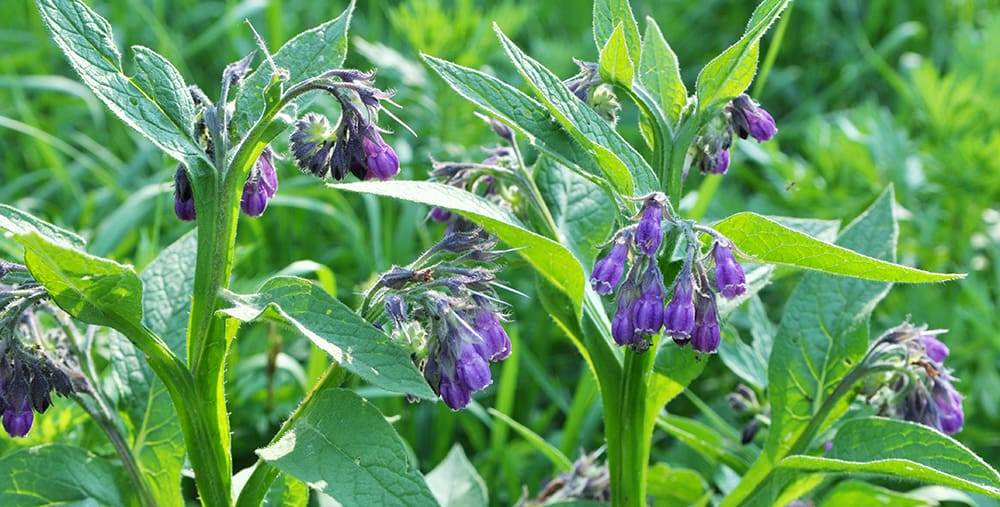
Comfrey’s needs are minimal, as it is a very competitive plant and capable of mulching itself. An application of composted manure each Spring will help it flourish, as will a regular watering of 1” per week.
Pest and disease pressure are almost a non-issue with Comfrey. It can be susceptible to powdery mildew. And slugs and snails sometimes like to make a meal out of the young leaves.
The Many Uses of Comfrey
Chop and Drop Mulch
Comfrey’s leaves make an excellent mulch. Simply chop the leaves a couple of inches above the crown, and use them around fruit trees, vegetable seedlings, or even around the comfrey plant itself. The leaves break down fairly quickly in rain, allowing their nutrients – potassium, nitrogen, phosphorus, calcium (the list really does go on!) – to permeate the soil, fertilize the plant life, and feed the microbiology below.
Comfrey quickly regenerates! You can expect to get 2-4 cuttings of leaves in a season.
Companion/Guild Planting
Because of the way Comfrey plants draw up nutrients from deep within the soil, they are often used in companion planting settings and in permaculture guilds. It’s a common practice to plant Comfrey right next to a young fruit tree. Comfrey’s roots make the food the trees need more easily available, and its leaves offer a nutrient-rich mulch as well. Consider planting a nitrogen-fixing legume (a clover perhaps) in your guild to make sure Comfrey’s nitrogen needs are also met.
Compost Primer/Activator
Comfrey’s leaves, with their high nitrogen content, can also be used to activate your compost. If the pile is too carbon-rich, layer the leaves in between your “brown layers” to right the C:N ratio and activate the compost. Be sure to keep the pile damp, not soggy, to help this process along.
Compost Tea
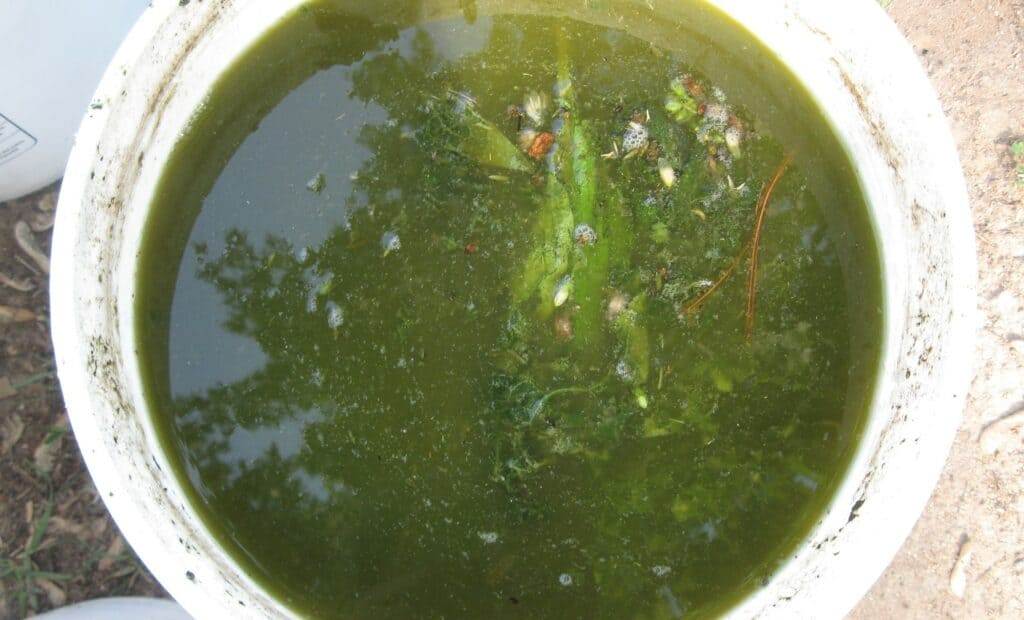
One of our homestead’s favorite uses of Comfrey comes in some really stinky packaging. Right at tomato planting time (early June), we chop our Comfrey leaves to make a compost tea. We pack 5 gallon buckets ½ – ¾ full with the leaves (they break down quickly), and fill the rest of the bucket with water. Every day we agitate the brew with a sturdy stick, stirring it several times (some folks use a bubbler to more consistently aerate).
After two weeks, we have buckets of a stinky, bubbly, deep green slime. (Truly, it smells like rot to the extent that we make sure to prepare it a good distance from the house.) Those two weeks have also given the tomato plants time to get established. Then we dilute the brew to a ratio of about 1 part green sludge: 4 parts water, and give each tomato plant a quart or two of the tea. Reliably, a week later, our tomatoes begin to really grow vigorously, green up, and strengthen their stems. This tea can be reapplied every couple of weeks, but be sure to stop once the tomatoes begin to fruit; the brew is definitely aimed at promoting leafy growth.
* We often add Stinging Nettle, another plant great at mining nutrients, to the compost teas we use for our tomatoes. And since the stink factor is already happening, consider throwing in egg shells, too. Tomatoes will take all the calcium they can get!
Weed Barrier
Comfrey’s extensive root system can be used to your advantage in building an underground weed barrier. They make an excellent garden border, planted thickly to ward off encroaching grasses. It’s worth remembering that Comfrey itself can become a bit of a weed, so be strategic in your plantings.
For Pollinators & Beneficials
Pollinators are drawn to Comfrey’s hanging bell-shaped flowers – bumblebees, in particular, whose backsides can be seen dangling from the blooms as they dive in head first.
Comfrey’s leaves also play host to insects we love to see in our garden, including parasitic wasps, lacewings, and spiders.
Soil Conditioner
Comfrey can be used to de-compact and nourish a piece of ground whose soil has been mistreated or a new area to be planted the following year. Its roots are fantastic at breaking up hard clay soil. And it can draw up nutrients in areas slated for future plantings.
Planted strategically, Comfrey can mine nutrients in an area where they might otherwise go to waste (say, to draw potential nitrogen run-off from a chicken coop or other livestock enclosure).
Human & Animal Use?
Before getting into the ways Comfrey can be used for human or animal consumption/medicine, it’s important to note that its safety for internal use is questionable and under study. The leaves and roots contain pyrrolizidine alkaloids known, when consumed in high levels, to cause liver damage and Cancer. It’s still unclear whether lower levels cause real harm. Ultimately, its usage comes down to personal and cultural choice and preference.
* Using plants medicinally should always be done with extensive research and in consultation with a medical professional.
Animal Fodder
Its high nutritional profile has made Comfrey stand out as a livestock food source. The hairiness of the leaves seems to deter cattle; sheep, chickens, and pigs are unfazed. In small quantities, this foraging may be of great benefit. But, in studies, large quantities of Comfrey consumed internally have caused liver damage and Cancer.
Medicine
With certain plants, their growth habit and physical make-up tell the story of their medicinal benefit. Comfrey demonstrates this with its incredible growth and regeneration; it proliferates its own cells, and it helps the body do the same. Medically, Comfrey is used to heal wounds and even knit together broken bones. (Its genus name comes from the Greek symphyo, meaning “to grow together.”).
In our home, we opt out of taking Comfrey internally, but apply poultices of the leaves and roots to sprains and cuts. Be mindful: Do not use Comfrey on deep wounds. Its ability to knit together is so powerful that it can close a wound before it has fully healed internally, potentially trapping infection within.
Closing Thoughts
Comfrey is a permaculturist’s dream: a multi-purpose plant requiring very little input, that gives and gives and gives. Easy to grow, nearly impossible to get rid of, and a total joy to watch thrive in the garden.

